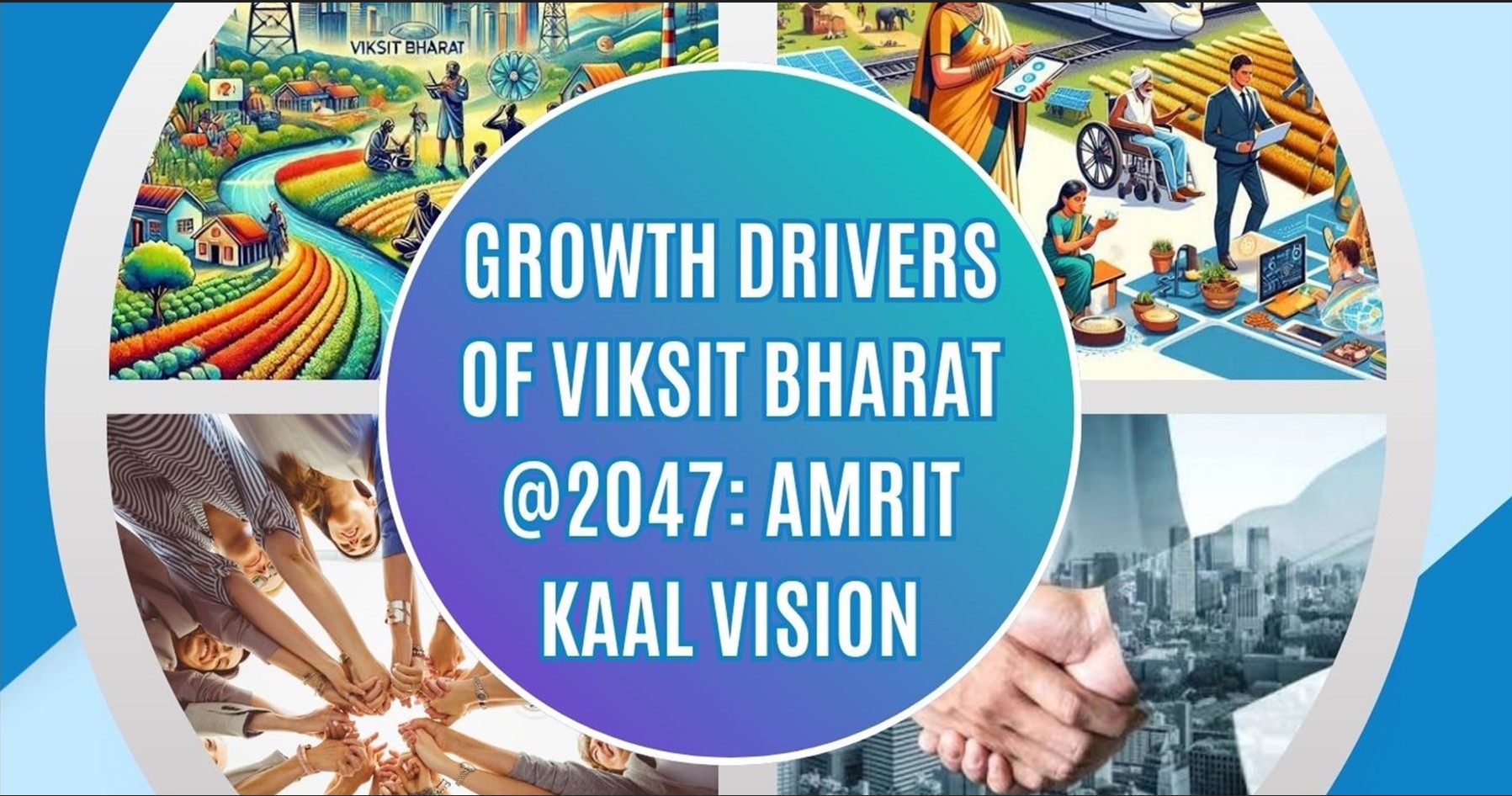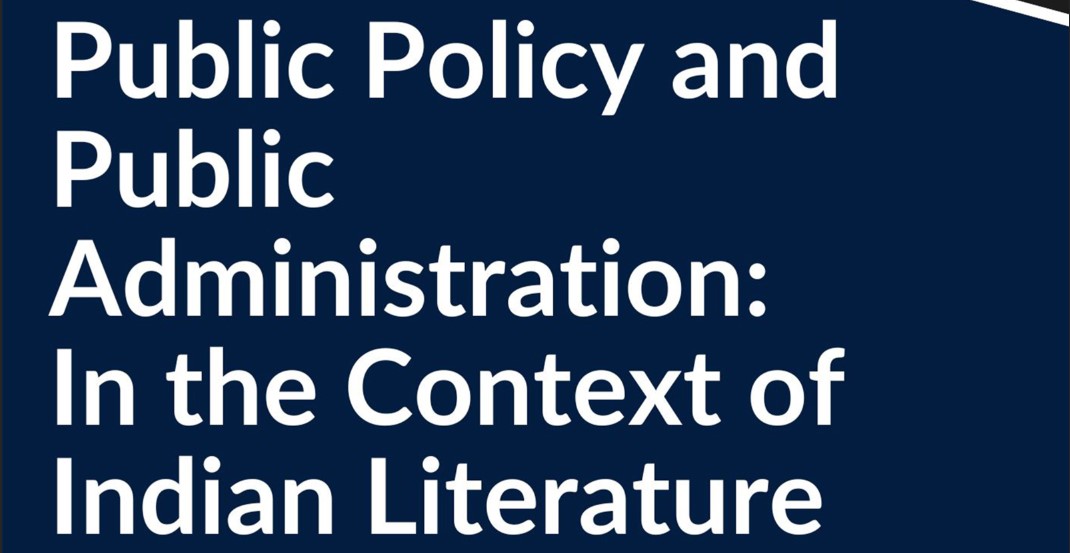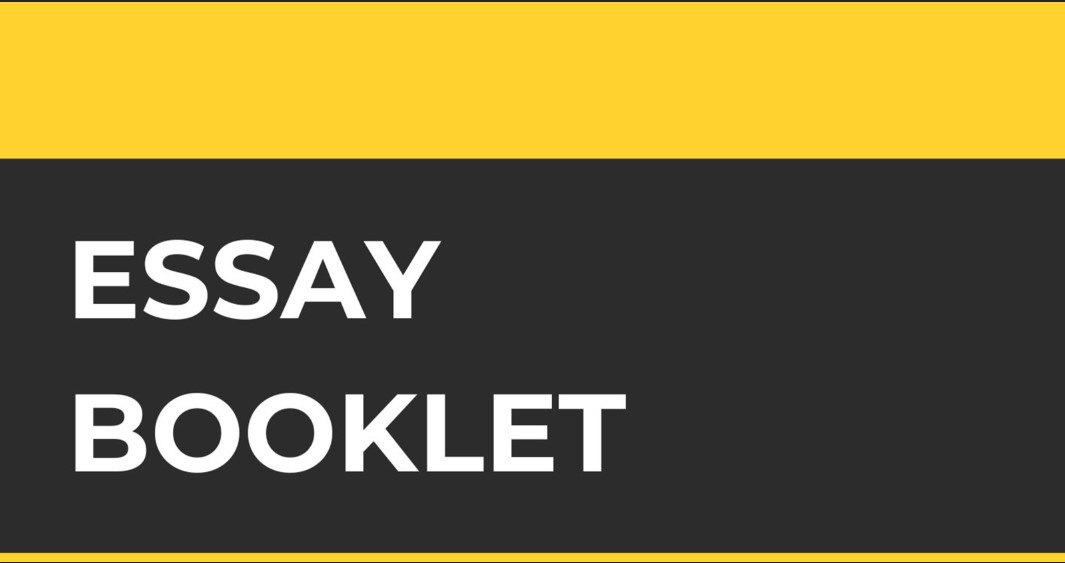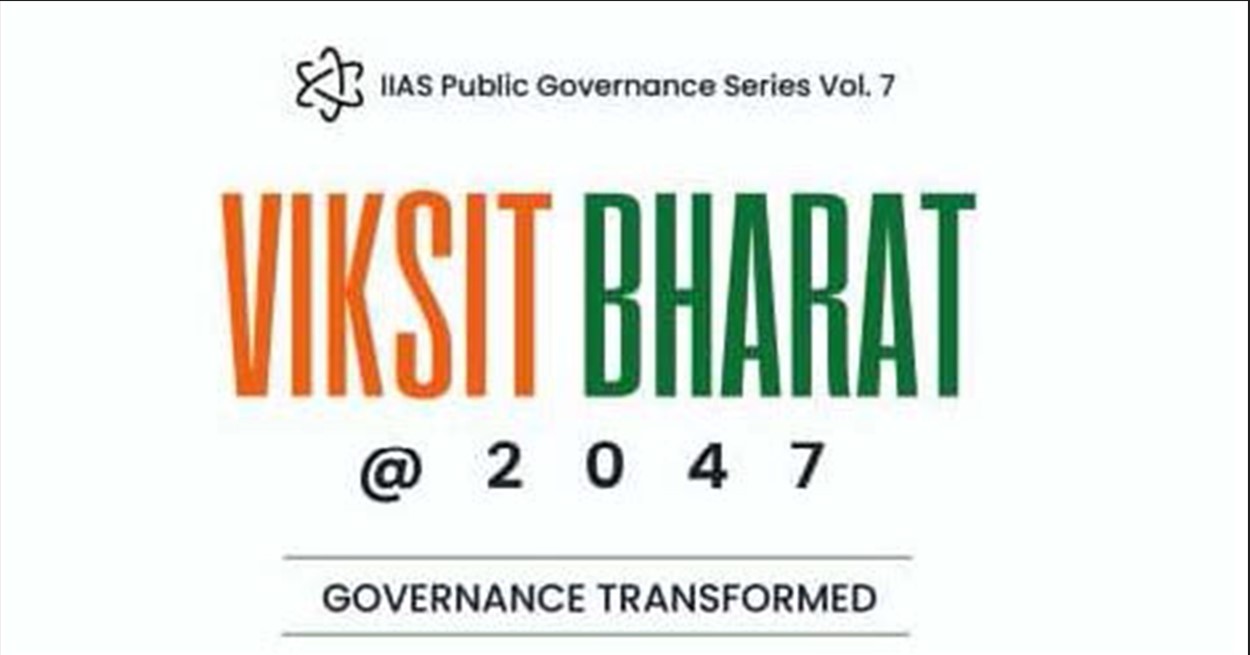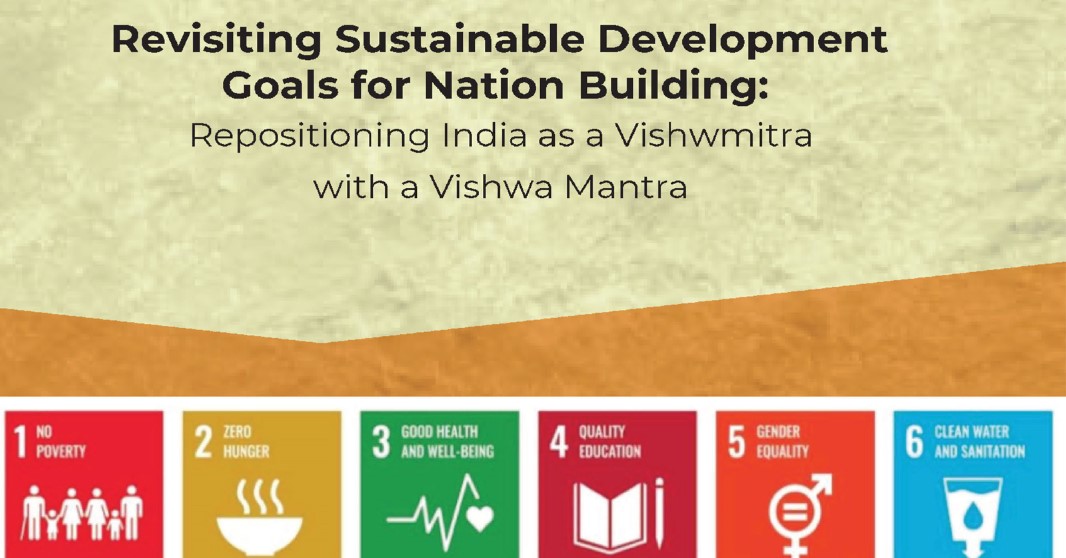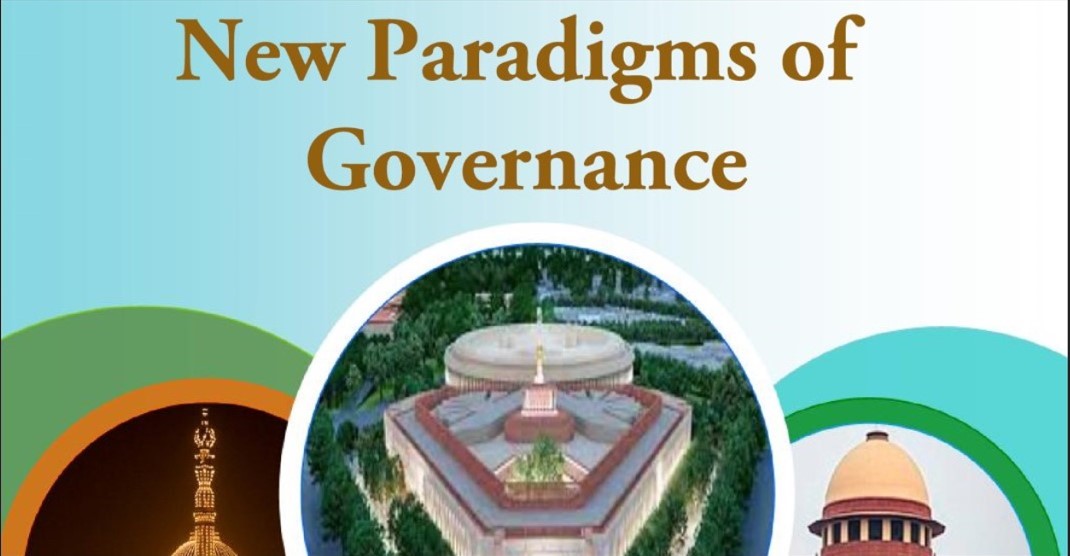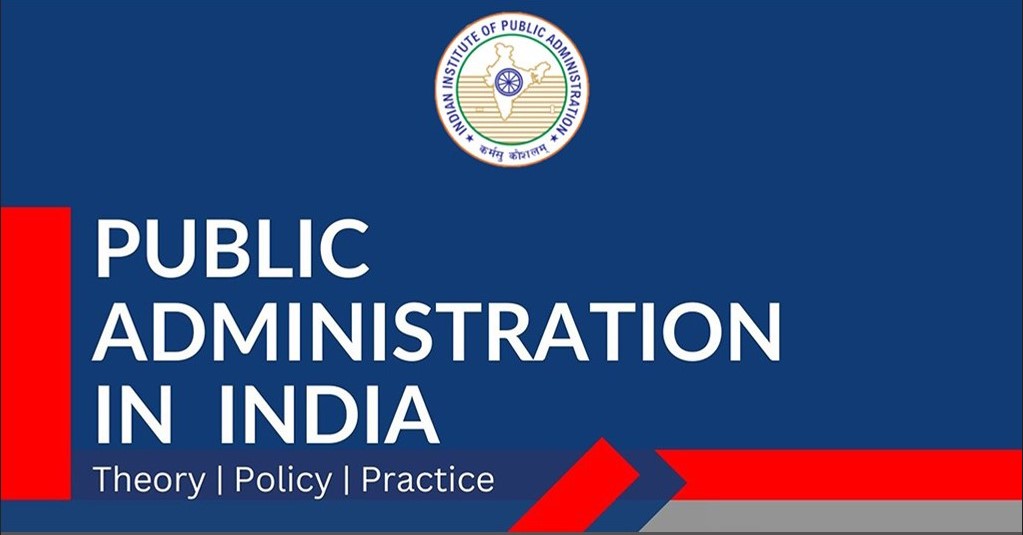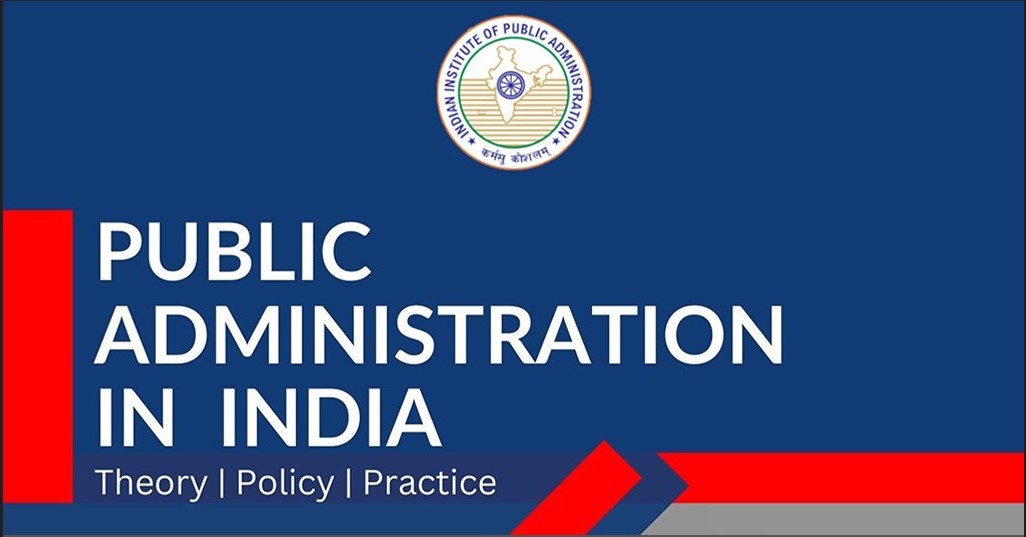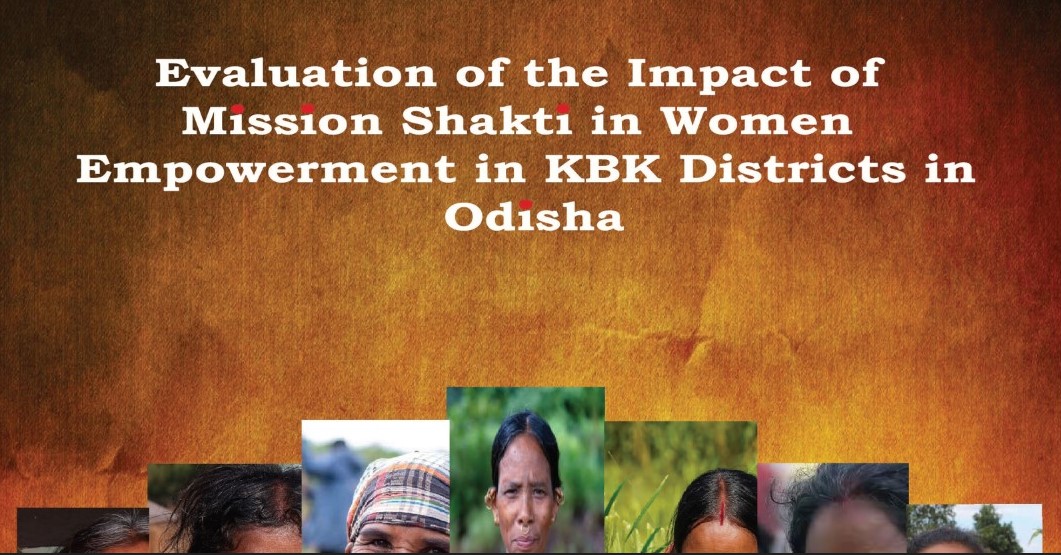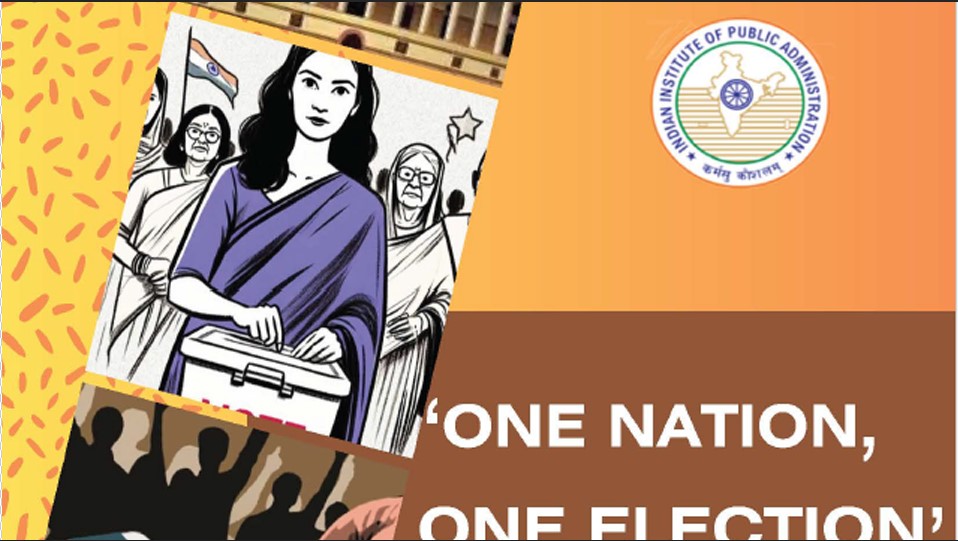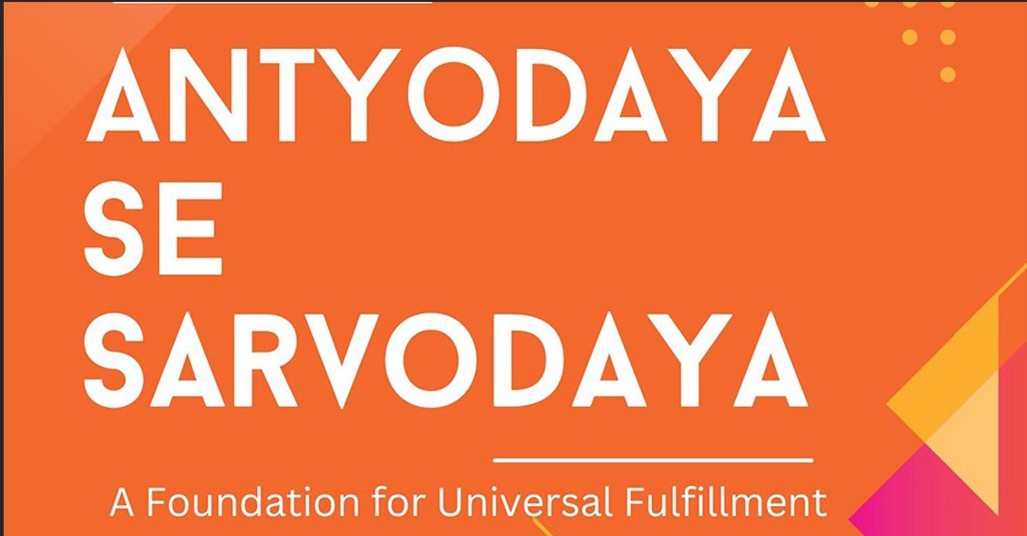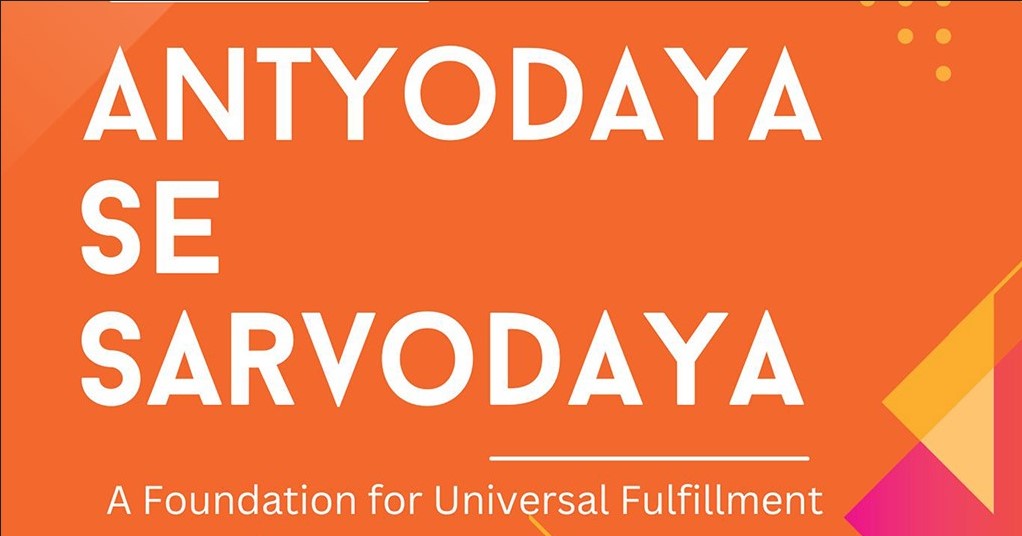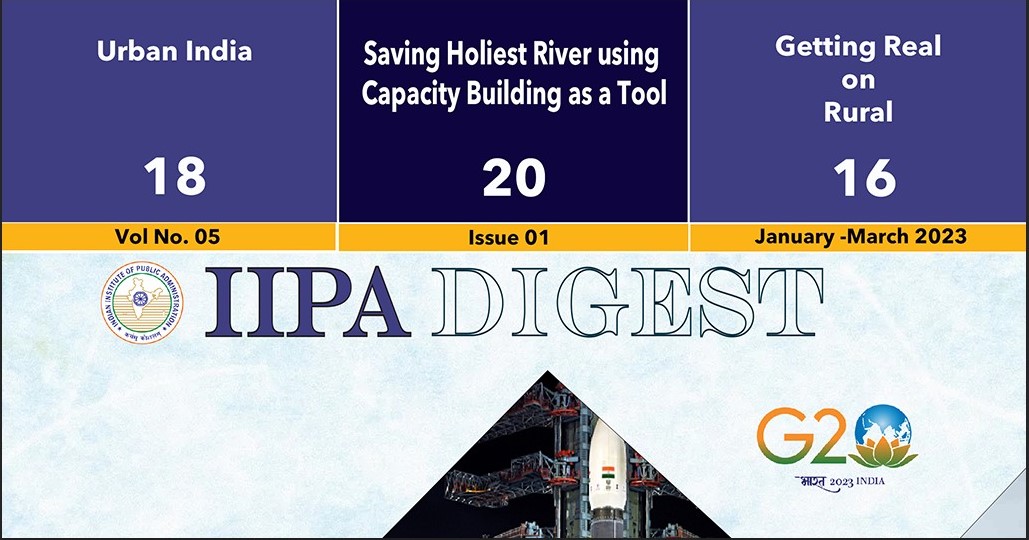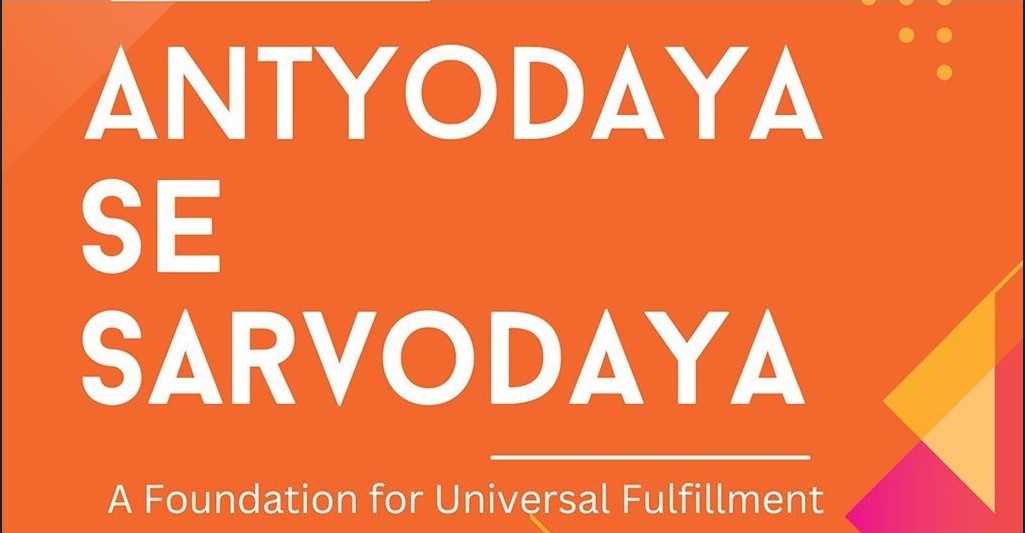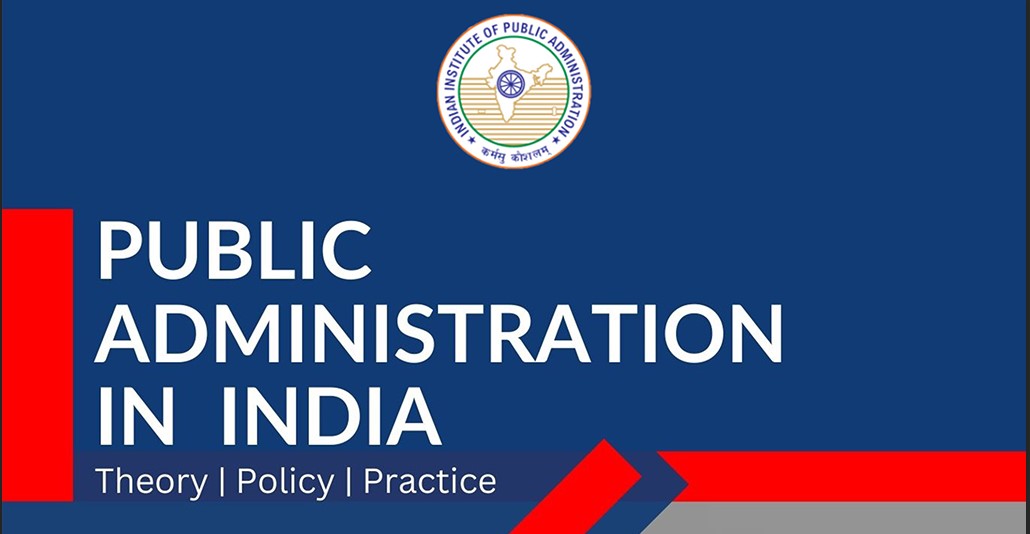Inclusive Finance: Role of FINTECH & Inclusive Growth
Abstract
The purpose of this study is to assess the Pradhan Mantri Jan Dhan Yojna (PMJDY) program implemented in India for inclusive growth for the people, for overall economic growth, with a changed strategy and approach. The study examines distinct feature and their uniqueness as compared to other programs implemented in the past for a similar cause. The paper also brings out the lacunae in the earlier approaches, which are a refinement in the present program. An in-depth analysis and assessment have been made for the poverty alleviation programs launched in the past to bring out the focus of policymakers. The distinct features of the present program and its practical implications have been highlighted, which will change the very approach of implementation. The study also elaborates on the strategies made at the grassroots level by different participating development agencies to make this program distinct and more effective, efficient, and qualitative.
Keywords: PMJDY, public policy, poverty, social security, inter linkages.
1. Introduction
The mechanism of public policy management involves public policy formulation, implementation, and management for various social and economic development aspects. The effectiveness of a successful public policy management is measured in terms of the degree of success in achieving the results for which the policy was formulated. Somehow, the results of various experiments implemented in this direction have not been as expected, leaving many lacunae in bringing qualitative improvements. Recently, the government in India launched PMJDY as a strong weapon to fight for the cause of the poor and thereby bring down the degree of poverty to a greater extent. According to the Reserve Bank of India’s FI-Index (Financial Inclusion Index), the extent of financial inclusion across the country rose to 64.2 in March 2024, with growth in all parameters. This shows significant improvements over the years, growing steadily at a CAGR of 5.75% since 2017 when the index was at 43.4.
On the contrary, according to a report by KPMG (November 2023), the non-performing assets (NPA accounts) and the amount have been increasing year after year with a CAGR of 22.51 per cent and 36.61 per cent, respectively, from FY 2017 to FY 2022. Public sector banks have the highest NPA of 22.6 percent and 16.9 percent against the number of accounts and disbursement, respectively, whereas NBFCs have the lowest NPA of 1.3 percent and 0.5 percent against the number of accounts and disbursement, respectively.
The process of Public policy formulation, implementation, and monitoring contributes significantly to the growth and development of an economy. The success of public policy is measured in terms of economic growth in general and, more particularly,https://www.jstor.org/stable/27321597segment for which the policy was formulated and implemented. The quality and commitment of people at large in the implementation of a policy assume more significance in the overall success of a policy program. The very first task of formulation of a public policy is itself a herculean especially for a country as large, populous, and diverse as India (Agarwal O O.O.P. & Somanathan, T.V., 2005). The deficiencies in public policy can happen generally at two stages, either at the policy formulation stage or at the implementation stage. Again, this has to be perceived in the context of the nature of public policy being formulated. In this paper, an attempt is made to study some of the policy lapses formulated and implemented for the betterment of the downtrodden in the past, and at the same time to analyze the unique features of policy formulation in the case of inclusive growth.
Among the series of experiments undertaken for the sake of rural development and thereby an effort to uplift the downtrodden strata of the society right from the independence and more particularly after the nationalization of Commercial banks in July 1969, the recent one being the Financial inclusion. Financial inclusion is said to be a crucial factor for inclusive growth in the most remote rural areas. The whole approach seems to be a bit different from the earlier approaches adopted and implemented to achieve the desired results. This can be explained in terms of a comprehensive approach which focuses on financial services, financial savings, and social security by providing pension funds and insurance products, etc. Financial services are meant to provide required financial assistance from institutional arrangements for sustainable projects and regular income to the poor, while financial savings are to be generated by the people through developing savings habits. The primary focus remains unchanged and very much matches the earlier approaches adopted for uplifting the poor and downtrodden. This paper has been segregated into four sections. Section one presents an assessment of government initiatives and their implementation strategies in the past. Section two highlights some of the gaps in the implementation process of poverty alleviation programs in the past, while section three explains the model of financial inclusion. Section four explains the changed perspective of the government and the adoption of a comprehensive approach for financial inclusion. The last section five concludes the study.
2. Literature Review
Dwivedi and Bhadouria (2023) conducted a study on the analysis of the uniqueness of the PMJDY (Concerning selected peer scheme) to study the various features of the PMJDY scheme and to differentiate it from other previously introduced schemes. The study was conducted with the help of secondary data that was collected from published articles, various journals, and the official website of PMJDY and showed that PMJDY has created a remarkable effect in the banking sector by opening large savings accounts, which help in reducing financial untouchability in the country. Gupta (2023) conducted a study on the history and present impact of Pradhan Mantri Jan Dhan Yojana to analyze the benefit and progress since beginning till April 2023 with the help of secondary data and concluded that PMJDY is an important tool of financial inclusion as well as a step to remove poverty in India and it has leaded financial inclusion towards in a positive direction. Further, it enables the direct benefit transfer facility, reducing leakages and pilferages in social welfare schemes and also helps to reduce corruption.
Dwivedi (2022) analyzed the progress of PMJDY and observed that the performance of Public Sector Banks (PSBs) was at the top with more than 80% contribution in PMJDY, followed by Regional Rural Banks (RRBs) and Private Banks (PBs) with 17% and 3%, respectively. It also showed that the zero-balance account has decreased continuously. Pradhan et al. (2021) revealed that in the long run, there was a significant impact of economic growth and financial inclusion on the ICT infrastructure, and there was no causality that flows from financial inclusion and ICT to economic growth. The empirical results showed that all three variables taken into consideration were interdependent in the states of India, where one variable plays an effective role in the advancement of the other. According to a World Bank study (2018) reported that 83 percent of males above 15 years of age in India held accounts at a financial institution in 2017, compared to the percentage of females.
Ashok et al. (2019) studied the impact on financial Inclusion after introducing PMJDY. In this study, the comparison between the increment of Financial Inclusion in various years found that the Inclusion rate has increased after the introduction of PMJDY. It was concluded that the effect of PMJDY on economic growth by the increment in Financial Inclusion. It is considered that PMJDY could enhance merely the arithmetic bank account ownership. The real objectives, like overdraft-enabled small entrepreneurship or more insurance benefits, could hardly be achieved. Sahu (2018) stressed that PMJDY is a very important scheme of the Government of India for Financial inclusion. It has been a successful scheme, but still, people in rural areas are not fully aware of the benefits of banking. The level of financial inclusion varied among different categories of the factors. E.g., the level of financial inclusion varies between males and females and/or between a literate and an illiterate person.
Sujlana and Kiran (2018) conducted a study on the status of financial inclusion in India and revealed that there is a direct need to provide quality financial services in rural areas for economic growth. In this study, an attempt was made to provide an overview of the status of financial inclusion in India in the past few years. On the basis of the analysis conducted, it is stated that the financial inclusion is in a progressive stage in India in terms of branch penetration. But certain efforts towards inclusive growth are still in a nascent stage and need to be given a concrete shape with the collaborative effort of the Government of India, along with citizens of the nation. Khandelwal's (2017) study revealed that most people are aware of PMJDY. The effort of the government to spread awareness among the general public of India turned out to be a success. The introduction of this scheme in India encourages the habits of savings among the masses. This scheme will be beneficial for increasing the economic development of the nation and reducing poverty. Policymakers in developing countries believe that financial inclusion helps in boosting economic development in many ways, such as economic growth, financial efficiency, financial stability, and social welfare.
Ramasethu's (2016) study revealed the importance of financial inclusion through PMJDY in the economy with the help of secondary data that was collected from the government. Websites, RBI reports, NABARD reports, Journals, etc. The study showed that PMJDY has played a very important role in making the economy cashless and increasing the level of financial inclusion, especially for the lower and weaker sections of society. Explained the role of public sector banks in financial inclusion. This study discussed the “Pradhan Mantri Jan Dhan Yojna,” which aims to provide financial services to each and every part of the country, and also about the various initiatives taken by R.B.I and various banks for encouraging financial inclusion services to achieve rural growth. Further, results showed that the PMJDY scheme marginally improved the pace of economic growth but failed to improve the overall economic prosperity level across states. Singh (2015) study includes the recent trends in financial inclusion in India with special reference to PMJDY highlighting its key areas and suggests strategies to ensure maximum financial inclusion for the unbanked areas and found that financial inclusion has not yielded the desired results and there is a long road ahead but no doubt it is playing a significant role and is working on the positive side found that PMJDY is an ambitious scheme for comprehensive financial inclusion with a target to provide ‘universal access to banking facilities’ starting with Basic Banking Accounts with overdraft facility of Rs.5000 after six months and Rupay Debit Card with inbuilt accident insurance cover of Rs.1Lakh and Rupay Kisan Card. It was found that financial inclusion has not yielded the desired results, and there is a long road ahead, but no doubt it is playing a significant role and is working on the positive side.
3. Past Programs in Retrospect
Before discussing opportunities and challenges in the implementation of inclusive growth, one needs to have a relook at the series of programs launched through the banking system for attaining similar objectives. To mention the important ones;
i. The Lead Bank Scheme was implemented immediately after Banks’ nationalization in 1969 to expand banking services to the hitherto neglected banking areas and extend credit to the needy.
ii. The RBI identified priority sectors where banks were required to finance liberally and on a priority basis. At present, 40 per cent of the bank’s credit needs to be extended under this. This limit was fixed in 1985, and all the banks achieved this target.
iii. The Twenty Point Economic Program was implemented to finance the economically weaker sections of society under different activities. The activities/vocations were identified particularly to benefit people below the poverty line.
iv. The Integrated Rural Development Program was implemented to assist low-income groups and encourage them to take up productive activities for sustainable growth. This was a comprehensive program with the added advantage of a financial subsidy to the beneficiaries.
v. Another scheme, namely Antyodya Yojana, was also implemented, particularly to benefit the poorest among the poor. This program was highly subsidized to minimize the debt burden on the poor.
vi. RBI also introduced the Differential Rate of Interest (DRI) scheme as early as 1971, which is still in vogue. Under this Bank, all public sector banks are required to lend at least 1 per cent of their outstanding advances of the previous year to the people living below the poverty line at a highly subsidized interest rate of 4 per cent.
vii. A concept of Self Help Group was also implemented to develop savings habits through thrift and to undertake group productive activities. To have a wider reach to financial assistance, these groups were linked to banks.
viii. Besides the above programs, which aimed at the mass and particularly at the poor and downtrodden, there were a good number of credit schemes implemented for providing self-employment to the educated and uneducated youth.
ix. The Regional Rural Banks were set up in 1975 with the exclusive aim of providing low-cost credit and easy access to the rural poor by these banks, which will operate in a limited area and work in the local environment.
x. The RBI created another banking tier, viz. Local Area Banks are just to extend financial help to micro entrepreneurs.
xi. The Mahatma Gandhi National Rural Employment Guarantee Act (MGNREGA) was launched in 2005. The study reports indicate a great degree of mismatch between demand and supply across the regions/states. There are also reports and criticism on the program’s actual impact, given massive leakages.
The Missing Links?
Though a good number of credit programs were implemented, but desired results could not be achieved. Various studies conducted to assess the performance of such programs revealed the following:
a. Most of the programs were implemented through a targeted approach, and banks were required to achieve the set targets. In the process, the qualitative aspects did not receive due focus, and the desired benefits could not reach the most needy.
b. The element of capital subsidy under different government-sponsored programs had many leakages and gave scope for misappropriation. The people (Beneficiaries) were more keen to avail the benefits of the subsidy element rather than taking sustainable, productive activities.
c. Leaving aside the basic education, banking education was lacking, which resulted in improper utilization of financial assistance.
d. The Extension staff supporting government-sponsored programs were not serious in their approach.
e. The banking staff, by and large, had an urban orientation. The existence of branches in far-flung places from the urban centers, lack of transportation and communication facilities, insufficient basic infrastructure at the workplace, etc, also caused hurdles to the successful implementation of various credit schemes.
f. All this resulted in turning large-scale non-performing assets, and banks had to have heavy write-offs offs which resulted decline in their profitability.
g. The financial assistance without proper linkages of inputs and marketing arrangements was also responsible to a greater extent for not achieving the desired results.
h. The concept of self-help groups could do little to develop savings habits, and some of the groups even stated that they ventured.
i. The low-cost model of functioning of RRBs could not be sustained for long as their operational cost reached the equivalent of other commercial banks. Then the question of their viability became a prime concern. This led to diversification of their operations and a bit of deviation from their main focus on rural development.
j. The idea of Local Area Banks could not be picked up as desired. Only a few banks are operating under this banner.
4. The Model of Financial Inclusion
Various research reports highlight financial inclusion as a key to the growth and development of the economy in general and individuals in particular. While explaining the Global Findex Database 2014, Demirg-Kunt et al. (2014) claim that 62 per cent of adults worldwide have a bank account. This was just 51 per cent in 2011. Their study also finds high variations in account penetration between developed and developing economies. Mankiw and Ball (2011) support that developing an inclusive financial system is an important component for economic development and progress. Campos and Dercon (2014) find a relationship between finance and growth as causal and unidirectional from finance to growth. There have been a number of studies to indicate that financial inclusion has a significant positive impact on the economic development of individuals. On the other hand, there are a good number of studies to show that lack of financial assistance can lead to poverty traps and inequality 9 (Banerjee and Newman, 1993; Galor and Zeira, 1993; Beck, Demirguc–Kunt and Levine, 2007).
The financial inclusion cannot be thought of in the absence of inclusive banking. Inclusive banking refers to the delivery of financial services at a lower cost to the disadvantaged and low-income groups who did not have access to the formal financial system. Shamika Ravi and Shruti Gakhjar (2015) in their papers suggest the success of Bank Rakyat Indonesia (BRI) in providing commercially viable financial services to the low-income households, which has several lessons for India. Explaining the financial inclusion, the Inclusive Finance Report 2015 by ACCESS states “the financial needs of the poor are basic-a safe place to save, credit for business farming, animal husbandry, emergencies, education, family needs and housing, remit funds to support family and business, life and medical insurance for protection against frequent exigencies they face and pension to support them at old age.’ Another study by Audil Rashid Khan (2015) suggests that the right targeting of the appropriate beneficiaries of the programs is very much needed. This certainly needed a comprehensive approach to tackle the problem of poverty in the true spirit. The inclusion of hitherto neglected sections of society in the banking system is the new model of inclusive finance. This model proposes the following strategies to bring the financially excluded group within the ambit of the formal financial system,
a. Provide adequate banking services by offering a basic banking “no-frills” account. This account can be opened by a person belonging to low low-income group at zero minimum balance or with a low balance.
b. RBI suggests that commercial banks introduce General Purpose Credit Card (GCC) or small overdrafts to no-frills account holders, which enables the account holder to withdraw up to Rs 25,000 and operate this account as a running account. The total credit provided as at the end of March 2014 under this category amounted to Rs 1097 billion to 7.4 million account holders. Thus, per account, credit amounts to Rs . 15582. There has been a significant increase in this figure as compared to March 2008, where per capita credit was just Rs 1802.
c. The model suggests the appointment of a Business Correspondent (BC)who will act as an intermediary between poor people and the financial institution and ensure a better relationship between the two.
d. The performance of BC will be monitored, and they will be provided with better training.
e. To create awareness among the poor about the facilities being offered to no-frills account holders.
f. Use of information technology has been emphasized to have easy and transparent transactions by the account holders under the scheme. In this direction, smart cards have been introduced for opening bank accounts and linking banking transactions to mobile handsets.
g. The social security benefits and other benefits extended by the government will be routed through Electronic Benefit Transfer to prevent any kind of leakages.
h. The RBI liberalized the policy of Bank branches and ATM expansion to provide wider access to banking facilities.
i. RBI, through its website, has introduced project finance literacy to extend awareness about the banking schemes to various target groups.
j. Financial cum counseling centers have been set up, which will provide free financial education and make the target group aware of various banking schemes and facilities.
5. A comprehensive Approach: A policy initiative
To give a new dimension to the success of the whole approach of inclusive growth, the government initiated a distinct approach, something unique and much different from earlier approaches in the form of “Pradhan Mantri Jan Dhan Yojana” (PMJDY). The following are the features of the new policy initiatives. Keeping in view the low levels of bank penetration, particularly in rural areas, the policymakers thought that each household in the country to have access to a bank account. This has greatly facilitated the opening of bank accounts because the process was simple without involving many complications and documentation. The bank accounts opened under the scheme come with a RuPay debit card and also include accident insurance cover. RuPay debit cards are universal debit cards that aim to encourage entrepreneurial activity by liquidizing loan funds; essentially, it makes cash flow smoother and more transparent. This RuPay card scheme was conceived and launched by the National Payments Corporation of India (NPCI). Individuals whose accounts were opened before January 26, 2015, have also been provided with a premium-free life insurance cover. There are several public sector and private sector banks taking part in providing bank accounts under the PMJDY. The special Benefits under the PMJDY Scheme are;
i. Receipt of interest on deposit.
ii. Insurance cover of Rs. 1 lakh in case of accident.
iii. Zero balance requirement in the account.
iv. Hassle-free transfer of money across India.
v. Under different government schemes will get direct benefit transfer in these accounts.
vi. An overdraft facility will be permitted.
vii. The account holder can have access to pension and insurance products.
viii. A unique facility of an easy overdraft up to Rs. 5000 is available.
A significant achievement of this scheme was that on the first day of the launch on August 28, 2014, over 1.5 crore accounts were opened in various banks. This seems to be an unprecedented record across the globe. The process of issuing RuPay debit cards was relatively slow compared to the opening of new accounts. This had an impact initially since operationally, the Rupay debit card and the bank account were separate processes; however, functionally, individuals required both simultaneously in order to make transactions. According to reports as of September 1, 2015, an amount of Rs. 23,000 crores was deposited in over 18 crore bank accounts within a year of the launch of the scheme. Further analysis indicates that out of these, nearly 11 crores were opened in rural areas, over 14 crores were opened through public sector banks, and more than 3.2 crores in Regional Rural Banks (RRBs). The following table presents the progress under the above scheme.
Table 1: Pradhan Mantri Jan–Dhan Yojana Progress as of November 13, 2024 (Figures in crore)
An interesting aspect is that a beneficiary is required to open a no-frills account with zero balance, and there is no requirement to maintain a minimum balance in the account. But in practice, it is observed that the deposits I these accounts have gone up significantly over the period of about 3 years. It shows an increasing interest of the beneficiaries in enhancing the habits of savings habits. At present, only 24.88 per cent of bank accounts opened under the scheme have zero balance as against nearly 50 per cent of accounts with zero balance in 2015. There are three categories of banks where the beneficiaries maintain such accounts. The percentage of zero balance accounts is 20.8 per cent in Regional Rural banks, 25.3 per cent in Public Sector banks, and 34.9 per cent in Private sector banks. This again establishes that people in rural areas are more cautious in maintaining the balance in their accounts, and the Regional Rural Banks mostly operate in rural areas.
There are several cases that demonstrate the advantages of these accounts. In one of the cases, M Ramesh feels much happier than now as did in earlier days. Till three years ago, the 28-year-old physically challenged man from Chinnapuram, a remote village in Andhra Pradesh’s Krishna district, had no source of income. The sole breadwinner of the family was his father, who had fallen sick and was unable to work. However, since 2014, Ramesh has been receiving ₹1,000 per month as a pension from the Government. The money is transferred to an account he got from Andhra Bank under the PMJDY. Linked with Aadhaar, the account is basic, and he doesn’t need to keep a minimum balance.
“I neither had a bank account nor an ATM card till three years ago. I’m somewhat comfortable now,’’ says Ramesh while getting onto his tricycle at his home. He uses a RuPay debit card to withdraw money. There are several cases like this. The banks, and in particular the public sector banks, had to face tremendous pressure in the beginning as the accounts were to be opened within the fixed deadline. Apart from the operating costs of these accounts without a minimum balance, there is a serious question about the viability of the banking operations. But things have now come to stay, and there are positive signs of recovery. The pace of opening accounts is only one aspect, but there are many challenges that the banks will be facing ahead. Some of them that matters include, creating demand for viable credit products, promoting habits of savings among the beneficiaries, linking digital mobile technology for smooth money transfer options to these accounts, speedy receipt of social security benefits etc. to effectively and efficiently implementation of the scheme, 3 more social security schemes were added to the PMJDY in May 2015. They are known as Pradhan Mantri Jeevan Jyoti Bima Yojana (PMJJBY), Pradhan Mantri Suraksha Bima Yojana (PMSBY), and Atal Pension Yojana (APY). All three schemes were simultaneously launched in 115 locations throughout the country, aiming to provide alternative financial security for the poor.
MUDRA
In another major policy initiative, the Micro Units Development and Refinance Agency (MUDRA) Bank were launched on April 8, 2015. The primary objectives of the MUDRA Bank are:
i. Regulate lenders and borrowers to bring stability to the microfinance system through regulation and inclusive participation, and thereby regulating lenders and borrowers.
ii. Extending financial and credit support to Microfinance Institutions (MFIs).
iii. Introducing a performance rating and accreditation system for MFIs to enable last-mile borrowers to evaluate and approach the MFI that is more appropriate.
iv. To provide a framework for the borrowers to follow to avoid business failures and initiate corrective steps in time. MUDRA will also prepare guidelines to be followed by the lenders to recover money in cases of default without causing any harassment.
v. To extend the Credit Guarantee Scheme for providing guarantees to loans being offered to micro businesses.
vi. To develop an appropriate framework under the Pradhan Mantri MUDRA Yojana to ensure an efficient credit delivery system to small and micro enterprises.
MUDRA Bank has broadly classified borrowers into three segments: starters, mid-stage finance seekers, and next-level growth seekers. Accordingly, borrowers have different kinds of loan facilities such as:
a. Shishu: cover loans up to Rs. 50,000
b. Kishor: cover loans above Rs. 50,000 and up to Rs. 5 lakh
c. Tarun: covers loans above Rs. 5 lakh and up to Rs. 10 lakh.
To make this movement more vibrant and practical, these are additional features added to the scheme, like MUDRA Card, Portfolio Credit Guarantee, and Credit Enhancement etc.
Payment Banks
Small finance banks, known as Payment Banks, are engaged in basic banking activities like accepting deposits and lending to under-privileged sections, particularly to small and marginal farmers, micro and small industries, and unorganized sector entities, and small business enterprises. They also promote payment and remittance services through channels. They also issue debit cards.
The following are essential features of the working of Payment Banks:
i. The primary objective is to promote savings, supply of credit to small business units, marginal farmers, micro and small industries, and to speed up financial inclusion efforts.
ii. The bank will engage in promoting basic banking activities of acceptance of deposits and lending.
iii. The payment bank will extend 75 percent of its Adjusted Net Bank Credit (ANBC) to the sectors eligible for classification as priority sector lending (PSL) by the Reserve Bank. Apart, 50 percent of its loan portfolio should constitute loans and advances of up to Rs. 25 lakh.
The concept of promoting payments banks is another major step that will provide a leeway to strengthen to financial inclusion process.
The Comprehensive approach
It is perhaps for the first time that a comprehensive approach and interlinkages have been established to help the poor and thus achieve the goals of financial inclusion in a true sense. There are two important aspects that need to be analyzed. One, extending finance without any support to productive projects will not serve the purpose. Over-expansion of money will have an adverse impact, the relationship may be non-linear as beyond a certain threshold (calculated to be above 100 per cent of GDP), finance is associated with negative growth (Berkes et. Al. 2012). Second, credit alone will not serve the purpose; there has to be a perfect social security system to meet any kind of eventualities. The Financial Inclusion in the form of a new incarnation takes care of the important aspects to a certain extent. Having discussed the public policy formulation issues, let us also understand that the implementation of policy initiatives also assumes more significance. This constitutes an integral part of public policy management. The implementation and monitoring process has to be perfect for the success of the PMJDY. This requires all-out efforts and concern from all the stakeholders.
To facilitate the beneficiaries and strengthen the arrangements for effective implementation, the Business Correspondent
6. Beyond PMJDY: a challenge
The credit to the poor has been a political concern for all governments, but with a different approach to gaining popularity from this segment. Further, certain policy decisions in the past have done more harm than good in effectively helping this strata, even though more than thousands of crores of public money have been spent to resolve the issue. As discussed at the beginning of this paper, there have been several measures and strategies to tackle the issue of poverty in one way or the other. But the question arises if there was a genuine quest to effectively and systematically manage this crucial aspect at all levels. Another issue of importance is that the different governments have different approaches to the same cause, and how legitimate is it?
Though it looks very lucrative to observe the initial progress of PMJDY in many aspects but this is only the beginning. The PMJDY per se has different dimensions and approaches in terms of focus of the program, integrated approach of credit, insurance, and pension, interoperability through RuPay debit card, clarity in role and remuneration of Business Correspondence (BC), etc. But many issues go beyond PMJDY and need serious consideration. Some of the pertinent issues that could be part of an effective public policy are;
a. The commercial banks are stuck with a severe problem of non-performing assets (NPAs). According to the Reserve Bank of India report-trends and Banking 2016-17, the gross non-performing assets (GNPA) increased to 9.3 per cent of bank credit and net non-performing assets (NNPAs) to a level of 5.3 per cent. Since the commercial banks have been operating on commercial principles and dealing with depositors’ money, the increasing NPAs have a direct impact on their efficiency. They cannot afford this situation. Therefore, they have to be vigilant and cautious to arrest the increasing trend of NPAs. In their efforts, the liberal approach in providing loans to weaker sections is bound to have some setbacks.
b. The commercial viability, even for small and medium enterprises funding will receive priority while taking up such projects for financing by banks. It will be equal to PMJDY beneficiaries. Therefore, there is an immense need to ensure the viability of all the small ventures. This requires a professional and systematic approach to make the small units viable at all levels. The policy initiatives will need to highlight this aspect and take adequate care.
c. The problem of marketing linkages, both pre and post, has persisted long time, especially in the rural areas. There are few efforts taken to provide marketing support to small and cottage units to procure raw materials timely manner and at reasonable rates, and at the same time, needed arrangements to sell their product to fetch an appropriate price for their products. There is a strong case for developing a mechanism whereby the beneficiaries of PMJDY could contribute in real terms to the growth process of both their own as well the country.
d. The majority of the people living below the poverty line meet their livelihood and other needs without any access to the formal financial institutional system. They fulfill their credit requirements through unconventional sources at a higher cost but without pain. This requires a look beyond PMJDY.
e. The experts on the rural credit delivery system suggest that there should be at least regulations. The RBI has ambitious plans for banks and expects banks to play an important role. The important challenge will be to create a high volume of transactions at a low cost. This becomes more crucial for IT-related services.
f. The entire success of PMJDY depends very much on technology-based financial services in the remote rural areas. The present situation of I IT infrastructure at these places is very poor. To fill this gap will be an uphill task.
g. A few other organizations are supporting financial inclusion initiatives like NABARD and SIDBI. They have formulated special schemes and provided active support to support this cause. All these efforts need to be translated into actual results on the ground level rather than remaining as a package alone. The benefits have to be percolated down the line to reach the deserving beneficiaries.
h. The most important requirement for the success of this mission is not only to create a sense of awareness among the beneficiaries but also to enthuse and motivate them to come forward to take up the required vocations through the available credit and become self-sufficient to stand on their own over time. The need for positive motivation to utilize all the resources is very much desired.
i. The quality and efficiency of services in handling the pension plans, insurance schemes in case of need, will also be an effective tool for the success of Financial Inclusion.
j. The policy initiatives are very enthusiastic about the health insurance of the poor, and there are adequate arrangements in the scheme to this effect. However, earlier studies (Ravi & Rai, 2011) reveal a limited understanding of health insurance that results in a much lower claims-to-coverage ratio for this segment. This requires a proactive approach on the part of insurance firms.
7. Findings
The poor and poverty were perhaps the last priority to be talked about in the pre-independence era, except that the segment was subject to exploitation. This remains one part of the story. However, another concern is that there have been a lot of experiments right from the independence in the direction of eradicating poverty. India is predominantly an agricultural economy, and the country is supposed to have the best talents and experts in terms of policymakers. There are a number of models experimented with in the past to bring this segment of society above the poverty line, but still the process of experimentation continues.
The existing policy and initiatives to launch PMJDY, if implemented in a true sense with all commitment and active participation at all levels, may prove a milestone and a turning point in the growth process of the Country in general and economically weaker sections in particular. There are many challenges that could be tackled through an effective public policy management mechanism to achieve the great mission of Financial Inclusion. As a public policy, the government has taken up this task with a distinct approach and vision. To make it successful and results-oriented in the true sense, there are a number of initiatives have been implemented effectively to make it comprehensive and more effective. The program has taken care of the direct transfer of social security benefits and other benefits to the beneficiary's account to prevent leakages. It has other provisions like easy accessibility of assistance in case of exigencies, provision for financial assistance to take up productive vocations, health insurance schemes, etc. If the implementation process becomes effective and efficient at the grassroots level, the financial inclusion program may bring more satisfaction to the needy and poor.
All said and done, the financial inclusion is certainly a unique program launched so far with several added features and facilities. Then, what is the burning issue, and what are the deficiencies that prevent the beneficiaries from running their business activities despite all this? There are primarily two reasons for the kind of pitiable position. One, the experience shows that beneficiaries in large numbers have become accustomed to availing the benefits, financial incentives, and bank loans over the last five decades or so, especially after the nationalization of banks in 1969. The reason is obvious, they have experienced and enjoyed the benefits of loan waivers, interest waivers, set-off of the loans by different state governments and the central government from time to time. Further, the political parties in power openly announce at the public platforms and rallies that the loans under the government schemes are sanctioned without any guarantee. The words “without guarantee” are to be underlined as the message is clear about the safety and security of such loans. This raises big questions. One, the rise in the growth of inclusive presents a rosy picture, while at the same time, is it not true that huge NPAs in these loans are a cause of much concern? Two, are we moving from “Financial inclusion and Inclusive finance to financial Trap?”
References
1. Address by Dy. Governor, RBI at panel discussion on Gem Next Banking, 25th Nov.2009.
2. Remarks by Dr. D Subbarao, Governor, RBI, at Bankers Club, Kolkata on Dec. 9, 2009
3. The Economic: Financial Inclusion Summit 2009.
4. Micro Finance and SHG – Bank Linkages, by Prof. N Subrahmanayam, published in Prajanan, vol.XXXVIII, no.3, 2009-10
5. Sa-Dhan, The Bharat Micro Finance Report, 2015
6. Allen F., Demirg-Kunt A., Klapper L., Martinez Peria M.S., 2012, “The Foundations of Financial Inclusion: Understanding Ownership and Use of Formal Accounts” Policy Research Working Paper 6290
7. Beck T., Demirg-Kunt A., Martinez Peria M.S., 2007, “Reaching Out: Access to and Use of Banking Services across Countries” Journal of Financial Economics 85: 23466.
8. Chakrabarty K.C., 2011, “Financial Inclusion: A Road India Needs to Travel”, RBI Bulletin, November 2011.
9. Pradhan Mantri Jan-Dhan Yojana, http://www.pmjdy.gov.in/scheme_detail.aspx
10. RBI Press release, “RBI constitutes a Committee on Medium-term Path on Financial Inclusion”, July 15th, 2015 https://rbi.org.in/Scripts/BS_PressReleaseDisplay.aspx?prid=34459
11. Ravi, S. and Rai, A.(2011), Do Spouses Make Claims? Empowerment and Microfinance in India, World Development, 39 pp. 913-921
12. O.P. Agarwal and T.V. Sumanthan, “Public Policy Making in India-Issues and Remedies”, Xavier Institute of Management
http://www1.ximb.ac.in/users/fac/shambu/sprasad.nsf/0/e78490ff090249d06525730c0030abf9/$FILE/Public_Policy_Making_in_India_TV_SOMANATHAN.pdf
13. ESID Briefing No. 1, Success and Failure in MGNREGA Implementation in India. http://r4d.dfid.gov.uk/Output/195389/
14. Reserve Bank of India Report, 2015-Trends & progress of banking
15. Audil Rashid Khaki, Does access to finance alleviate poverty? A case study of SGSY beneficiaries in Mir Valley https://www.emeraldinsight.com/doi/full/10.1108/IJSE-10-2015-0277
16. Government of India Official website: PMJDY
17. Chauhan AA. A Study on the Overview of Financial Inclusion in India. Indian J Appl Res. 2013;3(12):2249- 555X.
18. Sharma A, Kukreja S. An Analytical Study: Relevance of Financial Inclusion for Developing Nations. Int J Eng Sci. 2013;2(6):15-20.
19. Dwivedi PK. Pradhan Mantri Jan-Dhan Yojana (PMJDY): A Step Towards Financial Inclusion in India. Res J Humanit Soc Sci, 2022, 13(4).
20. Dwivedi T, Bhadouria SS. An analysis of the Uniqueness of PMJDY (Concerning Selected Peer Scheme). J Emerging Technol Innov Res. 2023;10(1):2349-5162.
21. Gupta K. Pradhan Mantri Jan Dhan Yojana: History and Present Impact. South Asian J Soc Stud Econ. 2023;19(2):21-27.
22. Khandewal, V. A Study on Awareness and Benefits of Pradhan Mantri Jan Dhan Yojana. Indian J Finance. 2017;11(1):0972-8703.
23. Pradhan RP, Arvin MB, Nair MS, Hall JH, Bennett SE. Sustainable Economic Development in India: The dynamics between Financial Inclusion, ICT Development and Economic Growth. Technol Forecast Soc Change; c2021, 169.
24. Raihanath MP, Pavithran KB. Role of Commercial Banks in the Financial Inclusion Programme. J Bus Manage Soc Sci Res. 2014;3(5):75-81.
25. Deb R, Das P. Perceptions of Bank Account holders about PMJDY. 11. Ramashethu A. Pradhan Mantri Jan Dhan Yojana: The Most Intensive Financial Inclusion Scheme in India. Int Educ Res J. 2016;2(6):41-43.
26. Sahu SK. Financial Inclusion Through: Pradhan Mantri Jan–Dhan Yojana (PMJDY). Int J Creat Res Thoughts. 2018;6(2):233-238.
27. Sachdeva S, Latawa S, Singh P. Role of Public Sector Banks in Financial Inclusion. Global J Multidiscip Stud. 2015;4(6):164-173.
28. Ashok S, Nair SS, Krishna MB. The Impact of Financial Inclusion in the Successful Implementation of Pradhan Mantri Jan Dhan Yojana (PMJDY) Scheme. Int J Innov Technol Explor Eng. 2019;8(6):406-410.
29. Singh K. PMJDY-A leap Towards Financial Inclusion in India. Int J Emerging Res Manage Technol. 2015;4(1):2278-9359.
30. .Sujana P, Kiran C. A Study on the Status of Financial Inclusion in India. Int J Manage Stud. 2018;5(2):96- 104.
31. Yadav V. Impact Assessment of PMJDY in Augmenting Financial Inclusion in India- A District Level Analysis. PalArch's J Archaeol Egypt/Egyptol, 2020, 17(9).
32. Government of India Official website: PMJDY
Leave a comment
More articles from Governance & Polity




